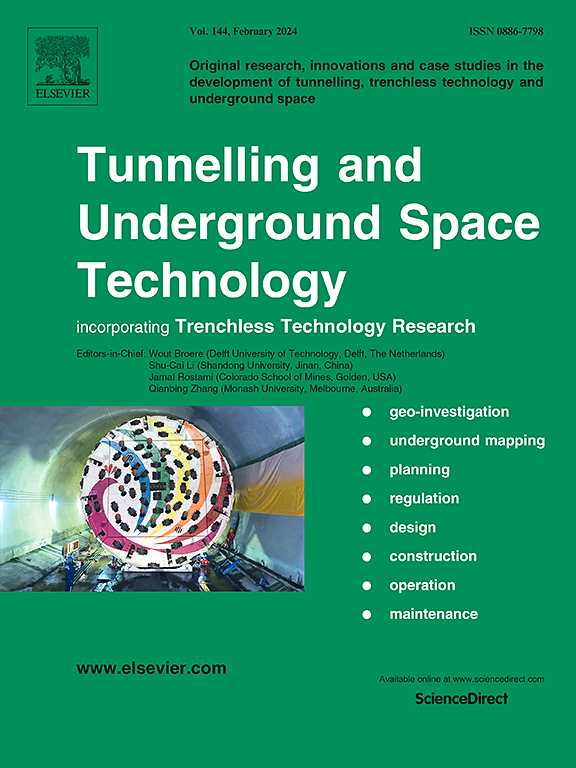Stress redistribution in some supported subway station tunnels within Upper-Soft and Lower-Hard strata during Excavation: A physical model study
IF 6.7
1区 工程技术
Q1 CONSTRUCTION & BUILDING TECHNOLOGY
引用次数: 0
Abstract
The disturbance mechanism between adjacent tunnels and the rules for stress redistribution in upper-soft and lower-hard strata remain unclear. This study designed and carried out a scale model test to simulate the excavation process of adjacent tunnels with the double side heading method in upper-soft and lower-hard strata. The mutual disturbance mechanism between adjacent tunnels and the evolution law of surrounding rock stress were investigated. The results show that the vertical and horizontal asymmetric deformation characteristics of tunnels surrounding rock were influenced by the lithology and integrity of the upper-soft and lower-hard strata. The process of stress redistribution in the surrounding rock exhibits stress concentration and local stress release at the interface due to mutual disturbance among tunnels. During the excavation of adjacent tunnels, the thickness of the stress loosening zone (SLZ) gradually increases at the vault and decreases at the sidewalls. In the upper-soft and lower-hard strata, the distribution range of the SLZ above the interface was smaller (about 479 mm), while the SLZ below the interface was larger (>1000 mm). When the interface is positioned above the tunnel vault, only a small range of SLZ vertically expands and crosses the interface, while a large range of SLZ horizontally expands along the interface.
求助全文
约1分钟内获得全文
求助全文
来源期刊

Tunnelling and Underground Space Technology
工程技术-工程:土木
CiteScore
11.90
自引率
18.80%
发文量
454
审稿时长
10.8 months
期刊介绍:
Tunnelling and Underground Space Technology is an international journal which publishes authoritative articles encompassing the development of innovative uses of underground space and the results of high quality research into improved, more cost-effective techniques for the planning, geo-investigation, design, construction, operation and maintenance of underground and earth-sheltered structures. The journal provides an effective vehicle for the improved worldwide exchange of information on developments in underground technology - and the experience gained from its use - and is strongly committed to publishing papers on the interdisciplinary aspects of creating, planning, and regulating underground space.
 求助内容:
求助内容: 应助结果提醒方式:
应助结果提醒方式:


